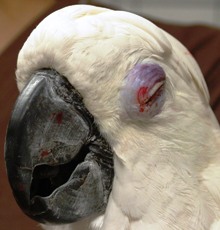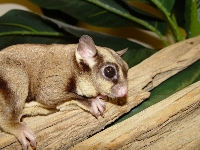Common Problems in Parakeets
Mites:
Parakeets that develop a thick scaley build-up on the beak and legs may be infected with a mite such as Knemidokoptes. This parasite can cause permanent deformities to the beak if left untreated. Treatment usually involves an antiparasitic drug such as ivermectin. If your parakeet has an unusual appearance to its beak or feet, a veterinary examination is needed to determine the underlying cause.




 Lorikeets, also known as lories, are able to extract almost all of the iron present in their food which leads to iron storage disease (hemochromatosis). Life-threatening levels of iron build-up in the cells of liver and other organs, which leads to profound liver damage and organ failure. Affected lories have difficulty breathing, a fluid-filled swollen belly, depression, paralysis, or may suddenly die. Treatment of hemochromatosis includes phlebotomy
Lorikeets, also known as lories, are able to extract almost all of the iron present in their food which leads to iron storage disease (hemochromatosis). Life-threatening levels of iron build-up in the cells of liver and other organs, which leads to profound liver damage and organ failure. Affected lories have difficulty breathing, a fluid-filled swollen belly, depression, paralysis, or may suddenly die. Treatment of hemochromatosis includes phlebotomy  Birds can injure themselves quite easily in the typical household. It is important to "bird proof" your home so that you lessen the chance of serious accidents.
Birds can injure themselves quite easily in the typical household. It is important to "bird proof" your home so that you lessen the chance of serious accidents.